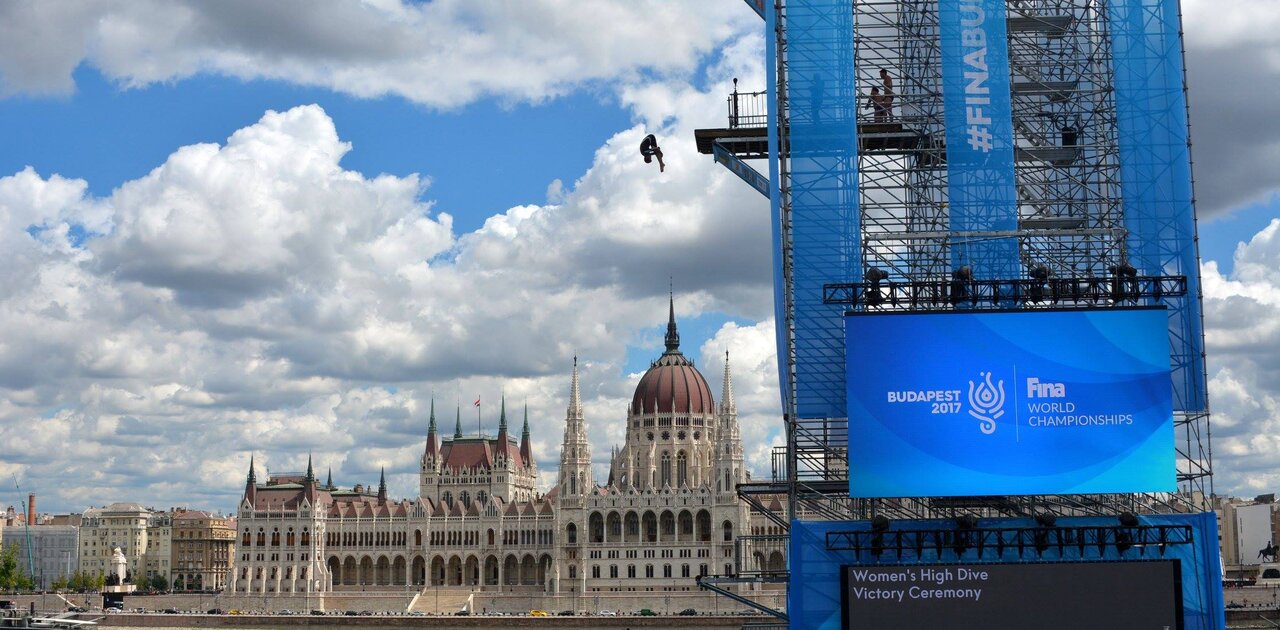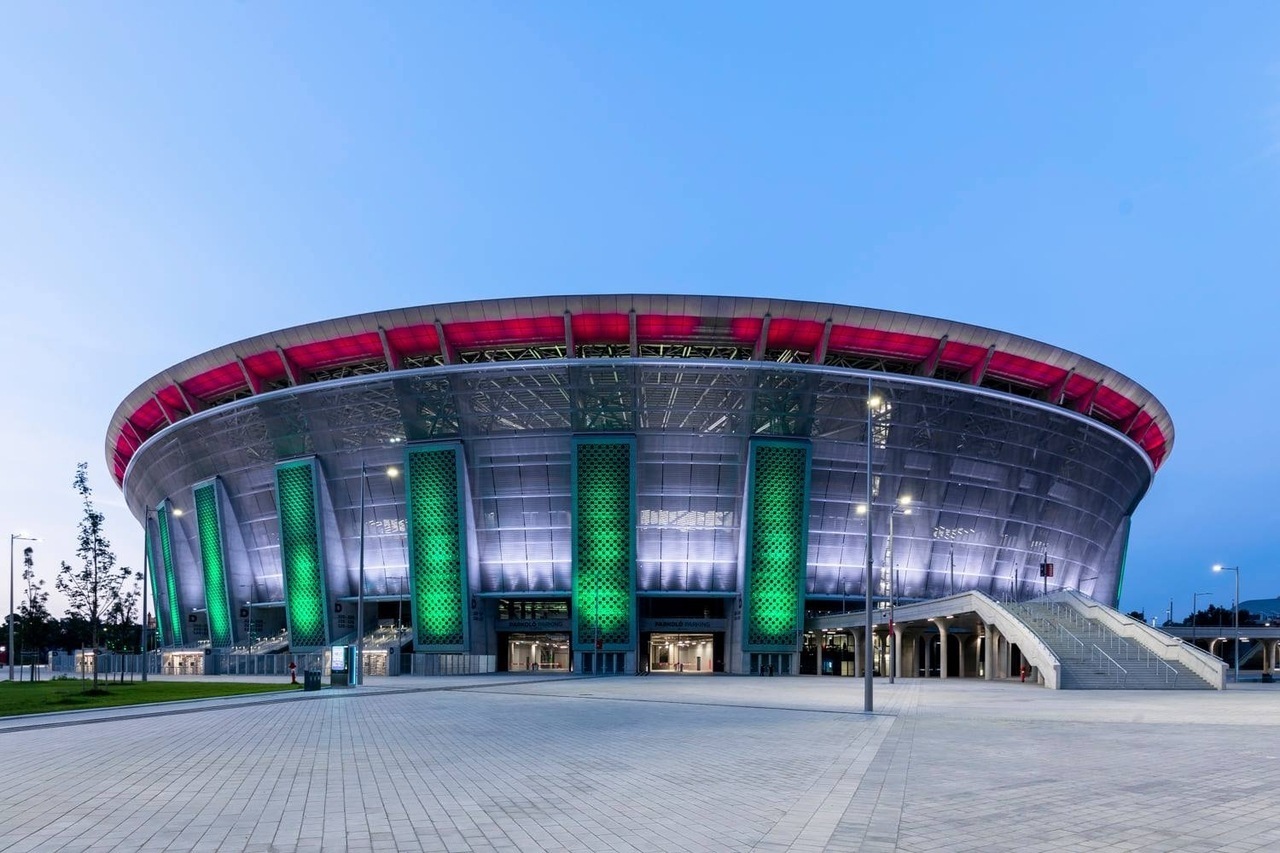Stadiums, World Championships: multiple priced prestige projects in Hungary

The most expensive stadium in the country is being constructed for the nine-day event, the cost approaching HUF 250 billion (EUR 644,209,179). The reason for the secrecy may be that the government’s prestige projects often cost much more than originally planned. The head of the company organising the world championships said they only had estimated figures, but that they determine the total costs afterwards.
This August, the capital will host the World Athletics Championships, for which the government is building a brand new arena. According to rtl.hu, the gigantic building on the banks of the Danube is already the most expensive sports facility in Hungary. Currently, it is estimated that the new athletics stadium in Budapest will cost HUF 246 billion (EUR 634,119,055).
Increasing budget
The construction of the stadium, with a capacity of 40,000 people, started in 2020. However, construction is not over yet and the World Championships are still more than six months away. This one of the prestige projects, including related developments, was said to cost HUF 204 billion (EUR 526,039,751), but prices have been rising ever since. Looking at similar projects in recent years, it is certain that the final figure of HUF 246 billion (EUR 634,119,055) is not the final sum.
And HUF 246 billion (EUR 634,119,055) is the current price of the stadium alone. How much public money is being spent on organising the nine-day world championship is not being disclosed.
“The government has pledged to provide all the necessary resources,”
said Balázs Németh, CEO of the company organising the World Athletics Championships.
The government gave an extra HUF 35 billion (EUR 90,230,140) for the prestige project last October. In December, the budget was increased by another HUF 8 billion (EUR 20,623,504), despite the fact that Nándor Csepreghy, State Secretary of the Ministry of Construction and Investment, said that it would not be more expensive because the construction of the structure was finished and the work would be partly carried out with previously purchased materials.
Orbán Viktor on prestige projects: “Let there be trust, we will solve the rest”
In 2017, the government brushed off questions about the increase in costs by claiming that many of the improvements would have been made without the World Cup. The event cost more than HUF 130 billion (EUR 335,231,667) instead of the HUF 25 billion (EUR 64,467,628) originally planned. “In the modern world, it’s not money that matters – although there are theories to that effect – but trust. We will find a way to make money” – this is what Viktor Orbán said when the foundation stone was laid for the swimming pool to be built for the 2017 World Aquatics Championships. So that was necessary.

Speaking of the World Championships, the 2019 World Kayak Championships and the development of the Olympic Centre in Szeged were small compared to the World Aquatics Championships. But the latter cost HUF 5 billion (12,896,610) instead of the planned HUF 1.85 billion (EUR 4,771,919), while the former cost three times as much as planned.
Simpler stadium, more expensive construction
The government decided in 2011 to demolish the old Népstadion and build a completely new arena. The costs were estimated at HUF 35 billion (EUR 90,270,705) in 2011. In 2014, the cost was estimated at HUF 100 billion (EUR 257,916,300), and the construction of a multifunctional sports centre that could host 6-7 other sports besides football was promised.
After another redesign, the Puskás Arena ended up being a much simpler one, but this was not reflected in the price: it cost HUF 150 billion (EUR 386,809,489). Typically, similar investments cost twice as much as planned – e.g. the Bozsik Stadium, the Vasas sports facility and the new ice hall of UTE – but some cost four times as much, such as the new Szeged swimming pool. Last year, the Hungarian House of Music in Városliget was voted the best building in the world, a building so unique that every element of it had to be made separately. This was reflected in its price: instead of the HUF 17 billion (EUR 43,837,931) originally planned, it was built for almost double that.

Controversial projects
Last year, the Prime Minister handed over another one of the prestige projects, the new building of the Museum of Ethnography. Almost HUF 40 billion (EUR 103,157,400) were spent on that investment. The development of Városliget has been controversial for years. because the expected cost of the megaproject has increased fivefold in a few years. In 2012, the total cost was estimated at HUF 55 billion (EUR 141,862,914), but in 2018, it was already estimated to be five times as much.
It is not known how much it will cost to move government departments to the Buda Castle district, restore the palaces of Dísz Square and Szent György Square, and renovate the Buda Castle Palace. However, experts interviewed by atlatszo.hu believe that the total price could exceed HUF 1,000 billion (EUR 2,579,325,714).
Source: rtl.hu, atlatszo.hu






ka-ching, ka-ching… sounds of a pipe-fitters nightly dreams… Thank you my dear friend OV, your loving straw man ML
Build it, and they will come – nevermind our health workers, our hospitals, our teachers, the high cost of living and housing.
Just build them like there is no end to it – while we are siill in EU